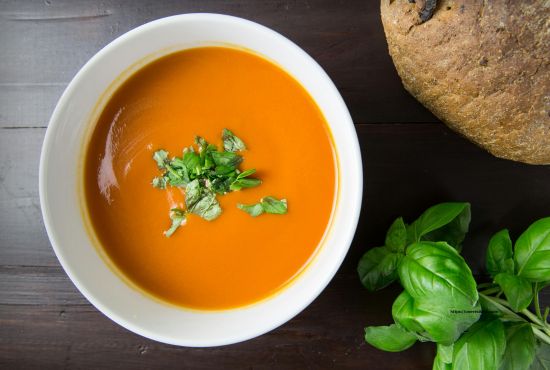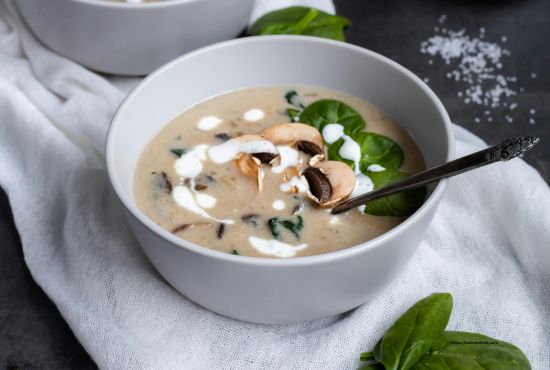
Homemade Babies Canning Food Recipes (4-6 Months) Stage 1 Baby
Would you like straightforward recipes for making Homemade Babies Canning Food Recipes (4-6 Months) Stage 1 Baby? The stage in which a child starts eating solids is a thrilling one. It is important at this point, to begin with simple, single-ingredient purees that are easily digested and less likely to cause allergies. This article guides you through the process of canning homemade baby food recipes for stage 1 that include different healthy vegetables and fruits. Making canned homemade baby food for first-stage babies (4-6 months) ensures your baby has fresh, nutritious, and safe food all the time. This guide will take you through how to prepare simple, single-ingredient purees that are great for introducing your child to solid foods.
Benefits of Homemade Baby Canning Food Recipes for Stage 1 Babies (4-6 Months)
Producing your own homemade baby food recipes guarantees that you are giving your child the most organic and fresh products. You have full control over every ingredient in each meal avoiding unnecessary additives, preservatives, and sugars often found in commercial variations. Additionally, it helps introduce the infant to different tastes and textures, which develops their taste buds and helps them develop healthier eating habits as they grow up.
Essential Tools for Making Homemade Baby Food Recipes
But before we go further into homemade baby food recipes 4 to 6 months, ensure you have these tools:
- Blender or Food Processor: For pureeing fruits and vegetables into the desired consistency.
- Steamer or saucepan: For cooking produce until it becomes tender.
- Freezer Trays: To store batches of pureed baby food.
- Spoons and Bowls: Dish up with soft-tip spoons and little bowls.
Safety Tips for Homemade Baby Food Recipes for Stage 1 Babies (4-6 Months)
- One Food at a Time: Introduce one new type of food at a time with a gap of three to five days so that any allergic reactions may be monitored.
- Proper Hygiene: Thoroughly wash hands, utensils, and cooking surfaces due to contamination prevention.
- Consistency Pureeing should be done smoothly and with a thin consistency, thereby avoiding choking risks.
Easy Homemade baby food recipes for stage 1
These detailed recipes contain single-ingredient purees appropriate for babies aged between four and six months old.
1. Sweet Potato Puree
Ingredients: One sweet potato
Instructions:
- Peel the sweet potato, then dice it into small cubes.
- Steaming is what will follow, taking about ten to fifteen minutes for the potato cubes to become tender.
- In the event that it’s too thick, add a little water or breast milk formula while pureeing until smoothness is achieved.
- Let it cool before serving.
Nutritional Benefits:
Sweet potatoes abound in beta-carotene, vitamin C, and fiber, which are vital for your baby’s immunity and digestion purposes.
2. Carrot Puree
Ingredients: 3-4 carrots
Instructions:
- Peel off and chop the carrot into small pieces.
- Steaming or boiling the vegetables may be used as well so long as they come out soft. It should take approximately fifteen minutes to boil or steam the carrots till they soften.
- Use a blender to turn your carrots into puree. Add water or breast milk formula if you want the mixture to be more watery than that in the instructions above
- Cool before serving.
Nutritional Benefits:
Carrots contain a lot of beta-carotene and vitamin A, which are essential for healthy eyesight and immune system functioning.
3. Pea Puree
Ingredients: 1 cup fresh peas/frozen peas
Instructions:
- Steam the peas for about five to seven minutes until they are tender enough to be easily mashed with a fork.
- Puree in a food processor or blender, making use of water alternatively depending on how much liquid is required to achieve a smooth consistency.
- Allow to cool before serving.
Nutritional Benefits:
Peas are good sources of vitamin C, iron, and protein, which enhance growth and development respectively.
4. Butternut Squash Puree
Ingredients: One butternut squash (small size)
Instructions:
- After peeling and removing seeds from your squash, cut it into small cubes.
- Steam for twenty minutes, then blend them together using a blender or food processor until uniform.
- Add some water if necessary when blending again with breast milk formula.
- Serve after it is cold enough to be eaten by a baby.
Nutritional Benefits:
Butternut squash is also packed with vitamins A & C, potassium, and fiber which are all very important for your baby’s growth.
5. Apple Sauce
Ingredients: 2 apples
Instructions:
- Peel, core, and dice the apples into small pieces.
- Steam or boil until tender.
- Blend in a food processor or blender until smooth, adding water if needed.
- Cool before serving.
Nutritional Benefits:
Apples are a good source of vitamin C and fiber, both of which promote digestion and immune health.
6. Pear Puree
Ingredients: 2 pears
Instructions:
- Peel, seed and chop the pears into small pieces.
- Steam or boil until soft (about 10 minutes).
- Puree with water in a blender or food processor to obtain a fine mixture.
- Leave it to cool down prior to feeding your baby with it.
Nutritional Benefits:
Pears support the digestive system because they are gentle on it and contain vitamins and dietary fiber.
7. Banana Puree
Ingredients: 1 ripe banana
Instructions:
- Peel the banana by separating it into smaller parts, as shown below.
- The same can be made smoother for babies by mashing it further with a fork or blending them all together in case you need something fine for your baby’s consumption purposes.
- Serve immediately so that the bananas do not turn brownish later after being exposed to oxygen.
Nutritional Benefits:
Bananas also contain plenty of potassium so that energy can be applied through muscles since B6 is important for them as well as magnesium which helps in keeping strong bones within children’s bodies.
8. Avocado Puree
Ingredients: 1 ripe avocado pear
Instructions:
- Slice the avocado into two halves, remove its pit then use a spoon to take out the flesh from each half.
- If mashed gently it becomes creamier otherwise blending gives more texture to this puree if required.
- Immediately serve so that browning does not occur later after exposure to air.
Nutritional Benefits:
Avocados are rich in monounsaturated fat, promoting brain development and health as well as cell function of the body since they have plenty of vitamin E.
9. Peach Puree
Ingredients: 2 peaches
Instructions:
- Peel, pit, and cut the peaches into smaller chunks.
- Steam or boil until soft (about 5 minutes).
- Blend in a food processor or blender until smooth, adding water if required.
- Cool before serving.
Nutritional Benefits:
Peaches are rich in vitamins A and C, which facilitates a healthy immune system and good eyesight.
10. Zucchini Puree
Ingredients: 2 zucchinis
Instructions:
- Wash and chop the zucchini into small pieces (peeling is optional).
- Steam the zucchinis until tender (about 10 minutes).
- Puree in a blender or food processor that is smooth enough with water added to get the required consistency for use by the baby.
- Leave it to cool down prior to feeding your baby with it.
Nutritional Benefits:
Zucchinis contains potassium, magnesium, and vitamin C, among other minerals, which are important for the general growth of a child.
11: Sweet Potato Mash
Ingredients: 2 large sweet potatoes
Instructions:
- Preparation: Peel off the skin, then cut into small cubes.
- Cooking: Steam till tender (roughly 15 min) or boil.
- Pureeing: Add water, breast milk, formula, and blend.
- Sterilizing: Jars, lids, and rings must be boiled for a minimum of 10 minutes.
- Filling: Puree into jars while leaving half an inch space from the top; clean the rim before inserting the lid and ring.
- Processing: Process as directed by the manufacturer in a pressure canner (usually 10 minutes at 10 PSI).
- Cooling: Allow the jars to cool for twelve to twenty-four hours without touching them. Check for seals, then store.
Nutritional Benefits: Abundant in vitamin C, dietary fiber, and beta-carotene.
Storage Tips for Canning Baby Food Recipes
- Refrigeration: Immediately after producing purees, keep them under refrigeration in airtight containers for up to two days later.
- Freezing: To save space, purees can be frozen in an ice cube tray and then moved into freezer bags once they harden, indicating how chilled they are. They should be used within one or two months while still fresh.
- Thawing: The next day, remove the frozen purees from the refrigerator or place them in a hot water bowl so that the cubes melt before being given to your child. This will make it easier to eat instantly.
Tips For New Foods Homemade baby food recipes for Stage 1 babies (4-6 Months)
Start Slowly: Begin with a single type of new meal every three to five days; this will enable you to identify any possible allergies or sensitivities that may occur due to the introduction of these new foods in the early stages.
Advantages of Canning Homemade Baby Food
Here are the advantages of canned homemade baby food recipes (4-6 Months) Stage 1 babies:
- Convenience: When you have canned baby food in stock, you can quickly prepare it without cooking every day.
- Cost-Effective: Compared to buying shop-bought baby food, bulk purchasing of produce and canning save money.
- Nutritional Control: Preservatives, additives or excessive sugar found in commercial baby foods are avoided when the ingredients are controlled by you.
- Seasonal Availability: So as to have them throughout the year, preserve those fruits and vegetables that grow at a specific time of the season.
- Reduced Waste: By utilizing surplus produce from your garden or farmers’ market, you can cut down on food waste.
Safety Tips for Canning homemade baby food for babies in stage one (4-6 months)
- Use Tested Recipes: To make sure you’re safe while canning, always follow tried-and-tested recipes that come from reputable sources.
- Proper Hygiene: You should thoroughly sterilize jars, lids, and utensils before using them.
- Correct Sealing: Good sealing of jars is necessary to avoid spoilage of stored products.
- Avoid Certain Foods: For low-acidic foods, use pressure-canning to prevent the growth of bacteria within these foods.
- Label and Date: Each jar’s content must be clearly labeled together with its day and date of processing so as to maintain an orderly record of its shelf life.
Most Frequently Asked Questions for Trending Homemade Baby Food Recipes for Stage 1 Babies (4-6 Months)
Q1. What is the Right Age to Start Introducing Solid Foods to My Baby?
Answer: It is generally recommended that you start feeding your baby solids when they are around four to six months of age. Some signs that indicate that your child is ready for solids include being able to sit with a little support, showing interest in food, and losing the tongue-thrust reflex (which pushes food out). However, this may vary based on factors such as health and if your child was born prematurely.
Q2. Which are the first Foods that are best for my Baby?
Answer: Sweet Potato Puree, Carrot Puree, Pea Puree, Apple Puree, and Pear Puree.
These foods also offer essential vitamins and minerals needed for infant’s growth and development.
Q3. How Can I Ensure My Baby’s Purees Are Smooth Enough?
Answer: To make sure purees are smooth enough for babies, do this:
Cook Thoroughly: Steam or boil until fruits and vegetables turn very soft.
Blend Well: Use a mixer or blender to make a completely even food paste.
Adjust Consistency: To achieve a thin puree that won’t lead to choking in babies, add water, breast milk, and formula to it before giving it out.
Strain if Necessary: You can pass the puree through a fine mesh strainer, removing any remaining lumps, if you want extra smoothness.
Q4. How Do I Store Homemade Baby Food Safely?
Answer: In order to maintain the freshness and safety of homemade baby food, it must be stored properly. Here are some guidelines:
Refrigeration: Keep fresh-made purees in airtight containers in the fridge for up to forty-eight hours.
Freezing: In ice cube trays, freeze purees, then put them into freezer bags or containers and date them. Use frozen baby food within 1-2 months.
Thawing: Defrost frozen purees overnight in the fridge or warm them up by placing the bowl in hot water. To prevent possible burns, never use a microwave to thaw baby food since it forms hot spots.
Q5. How Can I Introduce New Foods to My Baby Safely?
Answer: When introducing new foods to your baby, you need to be patient and keen so that you do not precipitate any negative responses from them. Follow these tips:
One at a Time: Start with just one new offering every three to five days and notice if there are any allergic reactions.
Watch for Reactions: There could be rashes, swellings, vomiting, or diarrhea, which should alert you about allergies. In such cases, stop giving the child that particular food and contact his or her pediatrician.
Vary Textures Gradually: Begin with fine purees, then move on to coarser textures as your baby adjusts to eating solids. This will make it easier for him or her in terms of swallowing food and readying his teeth for chewing when they finally appear, thereby facilitating an easier transition into solid diets.
Conclusion
Canning homemade baby food for Stage 1 babies is an effective way to give your child healthy meals that are both fresh and nutritious. Safe food processing guidelines will ensure health benefits and protect your baby against possible infections or diseases. Peace of mind comes from knowing what exactly the baby eats while enjoying this precious moment when babies start eating solid foods.
If you want to read more articles about homemade baby food recipes, homemade baby food recipes for 6–9 months, and homemade baby food recipes for 1-year-olds, visit our kids’ recipes.








